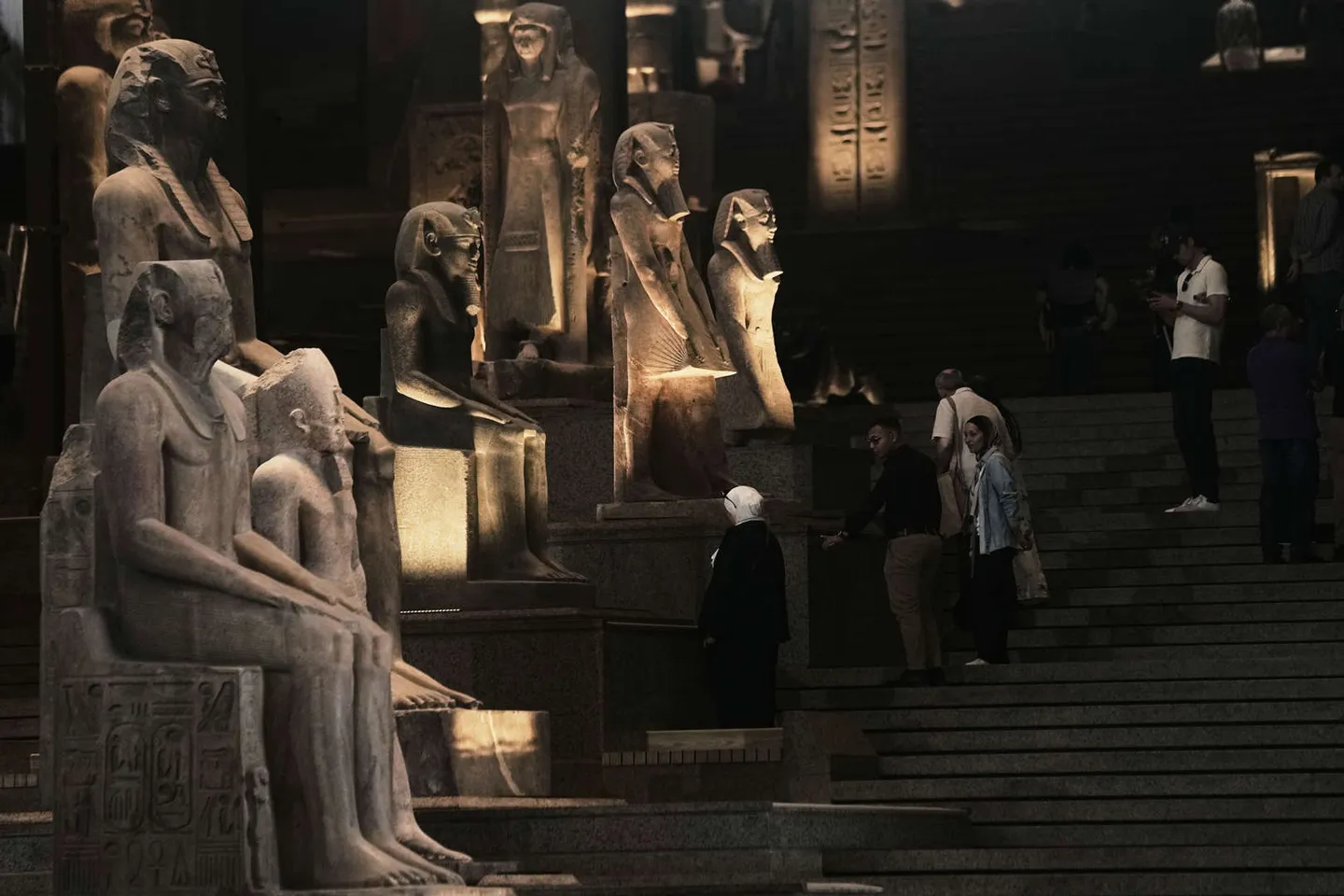After two decades of anticipation and countless delays, the Grand Egyptian Museum is finally having its grand reveal.
The museum, which is set to officially open Saturday, highlights Egypt's ancient civilization and is a centerpiece of the government’s drive to boost the tourist industry, a major source of foreign currency in the cash-strapped country.
Located just outside Cairo next to the famed Giza Pyramids, the $1 billion mammoth facility is poised to become the world’s largest museum dedicated to a single civilization with over 50,000 artifacts detailing the life in ancient Egypt. By comparison, the Louvre Museum in Paris has about 35,000 pieces on display.
The museum is one of the mega-projects championed by President Abdel Fattah el-Sisi.
The museum’s construction began in 2005, but work stopped for three years during the political turmoil that followed the 2011 uprising.
The grand opening was postponed multiple times, most recently in July this year because of conflicts in the Middle East. World leaders are expected to attend the opening ceremony Saturday.
Giant building, with a view of the Giza Pyramids Designed by the Irish firm Heneghan Peng Architects, the museum, known as GEM, boasts a towering, triangular glass façade imitating the nearby pyramids.
The museum includes 24,000 square meters (258,000 square feet) of permanent exhibition space, a children’s museum and conference and educational facilities, and a commercial area as well as a large conservation center.
The 12 main galleries, which opened last year, exhibit antiquities spanning from prehistoric times to the Roman era, organized by era and by themes.
Many of the 50,000 artifacts in the GEM were moved from the Egyptian Museum, a packed, century-old building in downtown Cairo’s Tahrir Square. Others were recently unearthed from ancient cemeteries, including the Saqqara necropolis, another complex of pyramids and tombs about 14 miles (22 kilometers) south of the museum.
Tutankhamun collection
Saturday's grand opening will include the inauguration of two halls dedicated to the 5,000 artifacts from the collection of King Tutankhamun.
The collection is being displayed in its entirety for the first time since British archaeologist Howard Carter discovered King Tut's tomb in 1922 in the southern city of Luxor. The old Egyptian Museum didn't have enough space to show all the tomb's treasures at once.
Another centerpiece of the museum is the 4,600-year-old solar boat of King Khufu, the pharaoh who is credited with building the Great Pyramid of Giza. The 43-meter-long (140-foot) wooden boat, discovered in the 1950s, was buried next to the Great Pyramid for Khufu — or Cheops as he is also known — to use in the afterlife.
The government hopes that the museum will revitalize tourism. The government hopes the museum will draw more tourists who will stay for a while and provide the foreign currency Egypt needs to shore up its economy.
A record number of 15.7 million visited the country in 2024, according to official figures, and the government aims to attract 30 million visitors by 2032.
Authorities overhauled the whole area around the museum and the pyramids. Roads were paved and a metro station is being constructed outside the museum gates to ease access to the sites. An airport, Sphinx International Airport, was also opened west of Cairo — 40 minutes from the museum.
Hassan Allam, CEO of Hassan Allam Holding, the firm administering the museum, said they’re expecting between 15,000 and 20,000 visitors a day at the museum.
“The world has been waiting … Everyone’s excited,” he said.




















